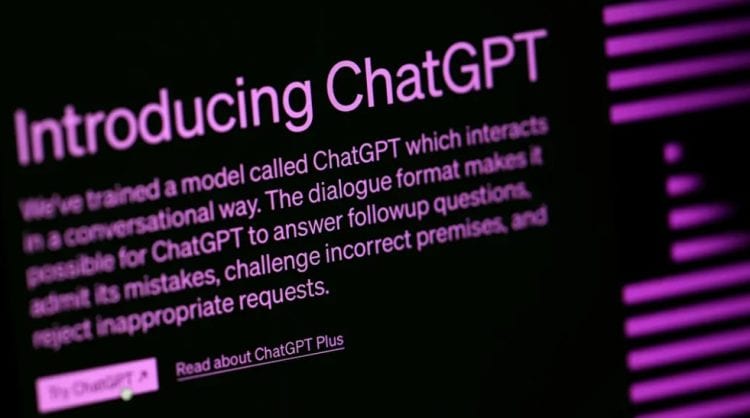
Artificial Intelligence (AI) has made significant strides over the past few decades, transforming numerous aspects of our daily lives. From enhancing healthcare to revolutionizing transportation, AI’s influence is undeniable. One of the most intriguing developments in AI is the creation of conversational agents, or chatbots, capable of engaging in human-like conversations. Among these, OpenAI’s ChatGPT stands out as a groundbreaking innovation, showcasing the potential of AI to interact with humans in natural and meaningful ways.
The Genesis of ChatGPT
ChatGPT, a product of OpenAI’s research and development, is built on the GPT-4 architecture. GPT stands for “Generative Pre-trained Transformer,” a type of neural network designed to generate and understand natural language. The journey began with GPT-2, which demonstrated remarkable text generation capabilities. However, it was GPT-3 that truly captured the world’s attention, with its 175 billion parameters enabling it to generate coherent and contextually relevant text across a wide range of topics.
GPT-4, the latest iteration, builds on this foundation with further refinements and enhancements, leading to even more sophisticated conversational abilities. The evolution from GPT-3 to GPT-4 involved not just scaling up the parameters but also incorporating more nuanced training methods, improved data preprocessing, and enhanced fine-tuning techniques.
How ChatGPT Works
At its core, ChatGPT operates using a transformer model, which relies on attention mechanisms to process input text and generate appropriate responses. The training process involves two main stages: pre-training and fine-tuning.
- Pre-training: During this phase, the model learns to predict the next word in a sentence by analyzing vast amounts of text data from the internet. This unsupervised learning approach allows the model to develop a broad understanding of language patterns, grammar, and general knowledge.
- Fine-tuning: In the fine-tuning stage, the model is further trained on a narrower dataset with human reviewers providing feedback on its outputs. This step is crucial for refining the model’s ability to produce contextually relevant and coherent responses, as well as aligning it with human values and ethical considerations.
The result is a conversational AI that can understand and generate human-like text, making it capable of engaging in a wide range of dialogues, from casual conversations to complex technical discussions.
Applications of ChatGPT
ChatGPT’s versatility and conversational prowess have paved the way for numerous applications across various sectors:
- Customer Support: Companies can deploy ChatGPT to handle customer inquiries, providing instant and accurate responses to common questions. This not only improves customer satisfaction but also reduces the workload on human support agents.
- Education and Tutoring: ChatGPT can serve as a virtual tutor, assisting students with their homework, explaining complex concepts, and providing personalized learning experiences. Its ability to generate detailed explanations makes it a valuable tool in education.
- Content Creation: Writers and content creators can leverage ChatGPT to brainstorm ideas, generate drafts, and even compose entire articles. This can significantly speed up the content creation process and inspire new creative directions.
- Healthcare: In the healthcare sector, ChatGPT can assist patients by providing information about symptoms, medications, and treatment options. While it cannot replace professional medical advice, it can serve as a helpful preliminary resource.
- Entertainment: ChatGPT can be used to create interactive storytelling experiences, generate dialogue for video games, and even simulate conversations with historical or fictional characters, enhancing the entertainment industry.
Ethical Considerations and Challenges
Despite its impressive capabilities, ChatGPT also raises important ethical considerations and challenges. Ensuring that the AI operates within ethical boundaries and does not propagate harmful content is paramount. Some of the key ethical issues include:
- Bias and Fairness: Like all machine learning models, ChatGPT is susceptible to biases present in the training data. Efforts must be made to identify and mitigate these biases to ensure fair and unbiased interactions.
- Privacy: ChatGPT’s ability to process and generate text based on user input raises concerns about data privacy. It is crucial to implement robust data protection measures to safeguard user information.
- Misinformation: Given its potential to generate highly plausible text, ChatGPT could be used to spread misinformation or create deceptive content. Developing mechanisms to detect and prevent misuse is essential.
- Dependence and Over-Reliance: While ChatGPT is a powerful tool, over-reliance on it for critical decision-making can be problematic. It is important to maintain a balance and ensure that human oversight remains a key component in contexts where accuracy and judgment are crucial.
The Future of ChatGPT
Looking ahead, the future of ChatGPT and similar AI systems is incredibly promising. Continued advancements in AI research will likely lead to even more sophisticated conversational agents, capable of understanding and responding to human emotions, cultural nuances, and complex contexts.
Moreover, as AI technology becomes more accessible, we can expect to see an increasing number of innovative applications across various domains. From personalized mental health support to enhanced collaborative tools for remote work, the possibilities are vast.
Conclusion
ChatGPT represents a significant milestone in the development of conversational AI, bringing us closer to a future where humans and machines can interact seamlessly and meaningfully. Its ability to understand and generate natural language has opened up new avenues for innovation and efficiency across multiple industries. However, with this power comes the responsibility to address ethical challenges and ensure that AI is used for the greater good.
As we continue to explore the potential of AI, ChatGPT serves as a testament to the incredible progress we have made and a glimpse into the transformative impact that AI-driven conversations can have on our world. Whether it’s enhancing customer experiences, supporting education, or creating new forms of entertainment, ChatGPT is undeniably bringing AI conversations to life, shaping a future where intelligent machines are integral to our daily lives.



